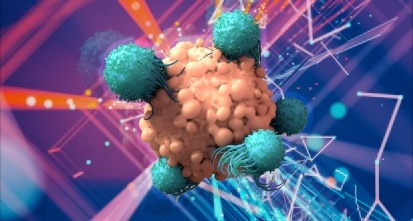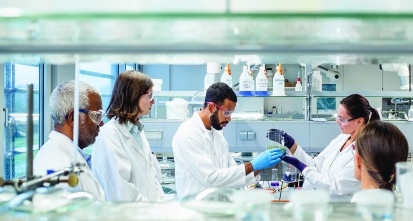Gain new perspectives for faster progress directly to your inbox.
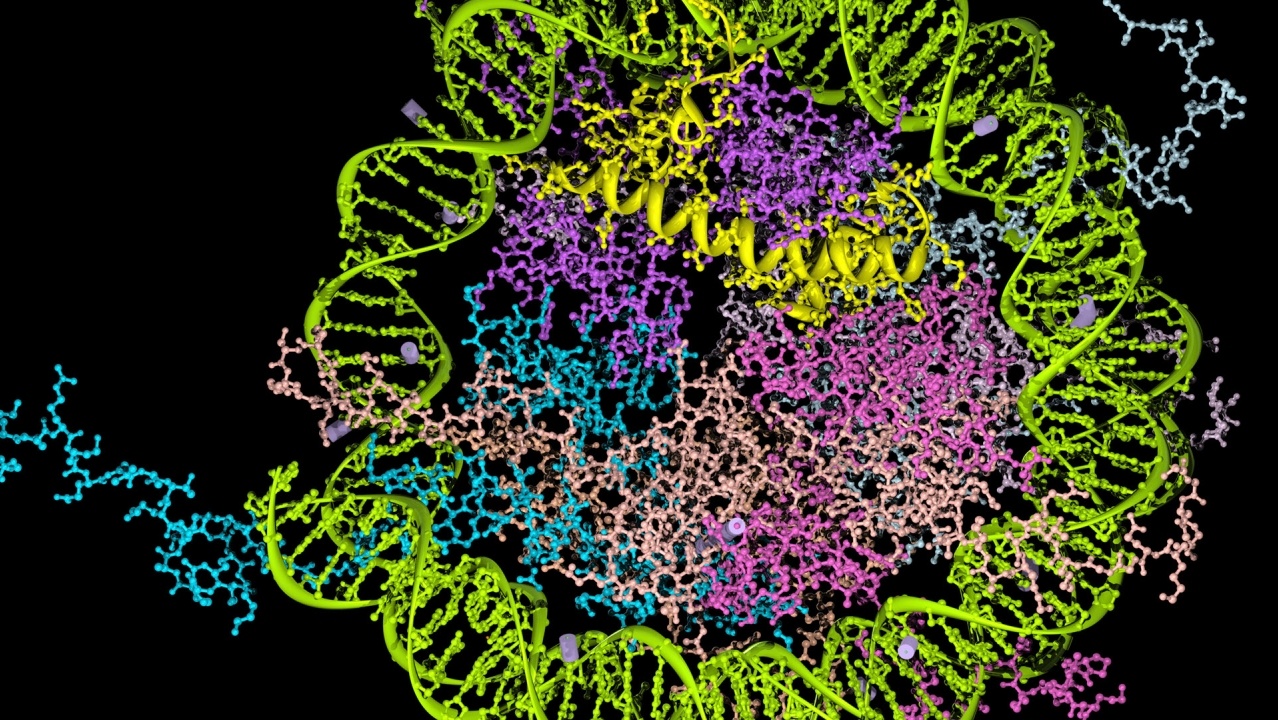
Sugars are not only crucial for normal physiological processes in the cell, but they also play an essential role in pathological processes. Bacteria and viruses can even recognize them to infect their hosts. While they remain an elusive research topic, the field of glycobiology has gained much interest in recent years from researchers from a range of disciplines. One such tool is bioorthogonal chemistry, which can be used for imaging glycans, the carbohydrate structures attached to proteins and peptides (Figure 1).
Recently, Carolyn Bertozzi's research group used bioorthogonal chemistry to make the stunning discovery of a new biomolecule, glycoRNA, which has been pioneering research in the field of bioorthogonal chemistry for many years. Here, we dive into the world of bioorthogonal chemistry and its applications, particularly how it has helped move the field of glycobiology forward and what opportunities lie ahead.
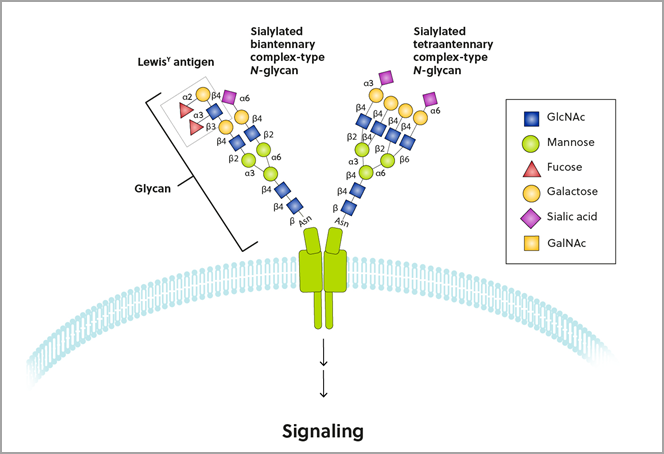
What is bioorthogonal chemistry?
The term bioorthogonal chemistry was coined by Bertozzi's research group, which has been pioneering the field for many years. Bioorthogonal chemistry is a set of reactions that can take place in biologic environments with minimum effect on biomolecules or interference with biochemical processes. The process of bioorthogonal chemistry fits the stringent criteria needed for reactions to occur as they should in biologic systems:
- Reactions must occur at the temperatures and pH of physiological environments.
- Reactions must provide products selectively and in high yields and must not be affected by water or endogenous nucleophiles, electrophiles, reductants, or oxidants found in complex biologic environments.
- Reactions must be fast, even at low concentrations, forming stable reaction products.
- Reactions should involve functional groups not naturally present in biologic systems.
What is bioorthogonal chemistry used for?
The CAS Content CollectionTM has allowed us to analyze publication trends in bioorthogonal chemistry applications from 2010 to 2020 (Figure 2). Imaging was the single biggest use of bioorthogonal chemistry between 2010 and 2020, followed by drug development and delivery.

(*2010 was selected as an initial reference point because it was the first year the number of documents containing "bioorthogonal chemistry" increased significantly relative to the previous year. Approximately 90% of the total number of documents containing the term "bioorthogonal" or "bio-orthogonal" have been published since 2010.)
Furthermore, protein bioorthogonal chemistry represents the highest number of publications, likely because these methods are the most established, with other fields steadily increasing as well, including the relatively new field of glycans (Figure 3).
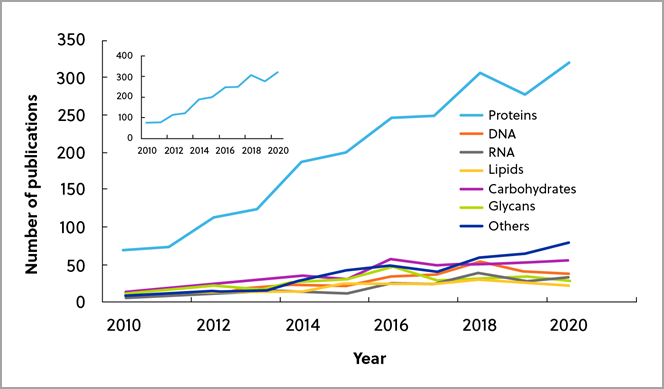
Glycan imaging
Bioorthogonal chemistry has proven to be an essential tool for understanding the structures, localization, and biological functions of glycans. Glycans are oligosaccharides attached to peptides, proteins, and lipids commonly found in cell walls, allowing their use in visualizing cell types selectively. Glycan metabolic precursors include many bioorthogonal functionalities, including azides, terminal alkynes, and strained alkynes. The glycans can be visualized using the appropriate bioorthogonal partner, e.g., azides are seen with phosphine-containing esters or thioesters by Staudinger or traceless Staudinger ligations, terminal alkynes or strained alkynes are identified using CuAAC or SPAAC, respectively.
Bioorthogonal chemistry moving glycobiology forward
Until now, RNA has not been a major target of glycosylation; however, a significant recent finding made possible using metabolic labeling and bioorthogonal chemistry was the discovery of "glycoRNA." Using a battery of chemical and biochemical approaches, Dr. Ryan A. Flynn led a Bertozzi research group that found that conserved small noncoding RNAs bear sialylated glycans and that these glycoRNAs are present in multiple cell types and mammalian species in cultured cells and in vivo.
The strategy used for this discovery was to metabolically label cells or animals with precursor sugars functionalized with a clickable azide group. Azidosugars enable bioorthogonal reaction with a biotin probe for enrichment, identification, and visualization after incorporation into cellular glycan. Using an azide-labeled precursor to sialic acid, peracetylated N-azidoacetylmannosamine (Ac4ManNAz), highly purified RNA preparations from labeled cells were found to exhibit azide reactivity. The assembly of glycoRNA is dependent on canonical N-glycan biosynthetic machinery and results in structures enriched in sialic acid and fucose. Further analysis of living cells revealed that the majority of glycoRNAs were present on the cell surface where they interact with anti-dsRNA antibodies and members of the Siglec receptor family. Further research is warranted to investigate the role of glycoRNA.
With the help of bioorthogonal chemistry, a direct interface between RNA biology and glycobiology was established, and there are now plenty of other discoveries to be explored.
What opportunities does the future of bioorthogonal chemistry hold?
Bioorthogonal chemistry has a wide range of applications in science and medicine and has been used to progress research significantly in recent years. In addition to propelling the field of glycosylation forward through the discovery of glycoRNAs, it has shown promising applications in drug delivery and drug targeting, and its use is likely to expand further in the future. Some examples include:
- In situ synthesis of pharmaceutical agents: Bioorthogonal chemistry may be helpful in assembling drugs from smaller precursors. By creating drugs as and when needed, drugs could thus be more effective and less toxic; the scope of pharmacologic intervention could also be expanded.
- Glycan labeling: Lipid nanoparticles have been generated containing azide-labeled galactosamines using folate ligands. Owing to the presence of increased folate receptors in tumor tissue, LNP internalization occurred, followed by cargo release into the tumor cells. Tumor membranes incorporated azide-functionalized dibenzocyclooctyne, triggering an immune response when tumor cells were exposed to human sera.
- Click to release: This method uses bioorthogonal chemistry to control the timing and location of drug release, resulting in a drug that should be selectively toxic to target cells.
With continued development and refinement of reactions, bioorthogonal chemistry will be an important tool for further research.
See our article in Bioconjugate Chemistry and related CAS Insights Report for more details about bioorthogonal chemistry and its wide range of applications.

